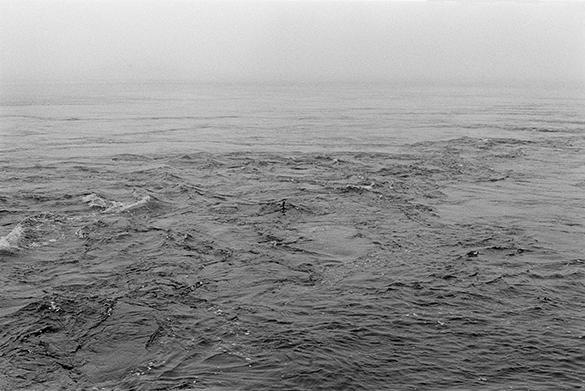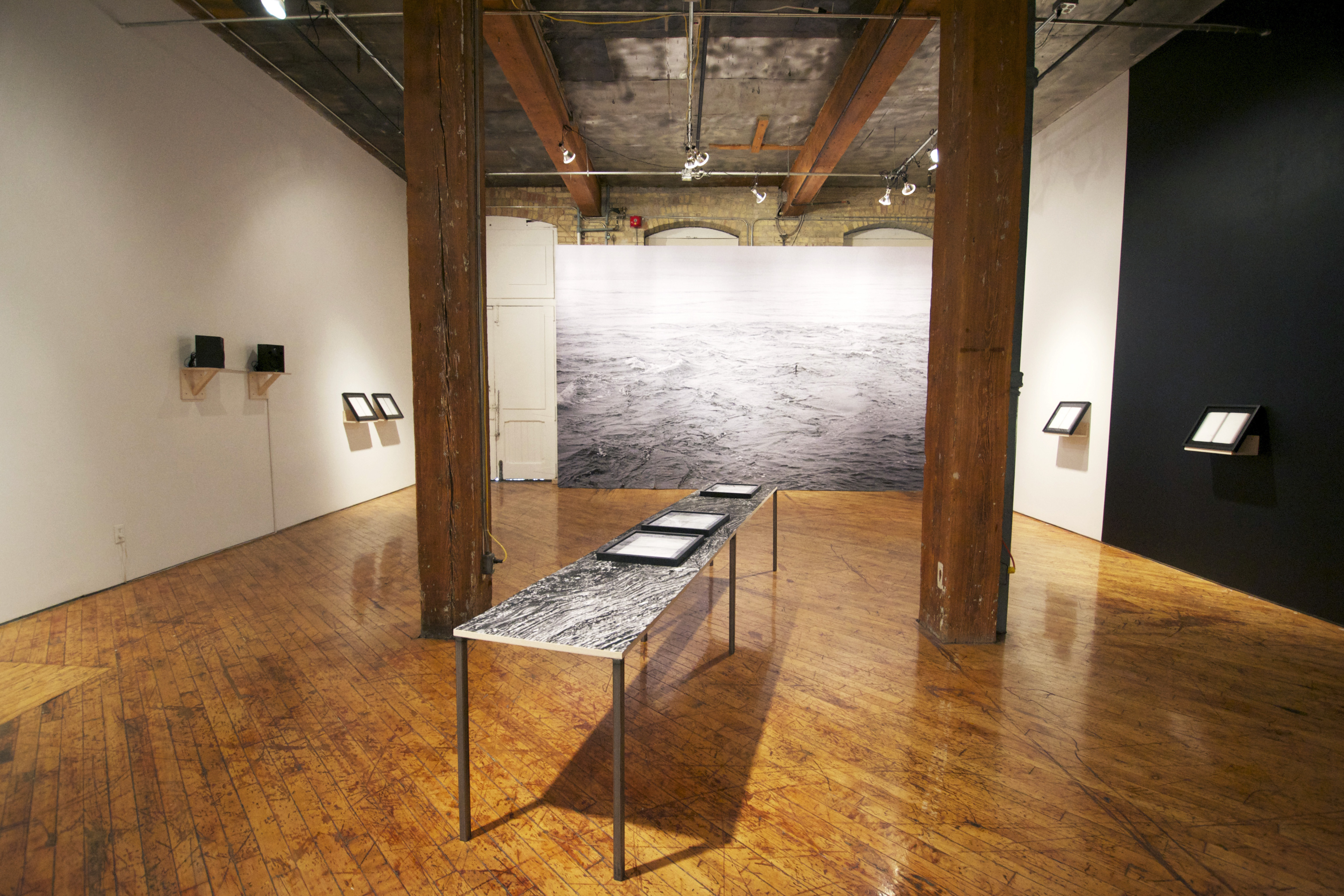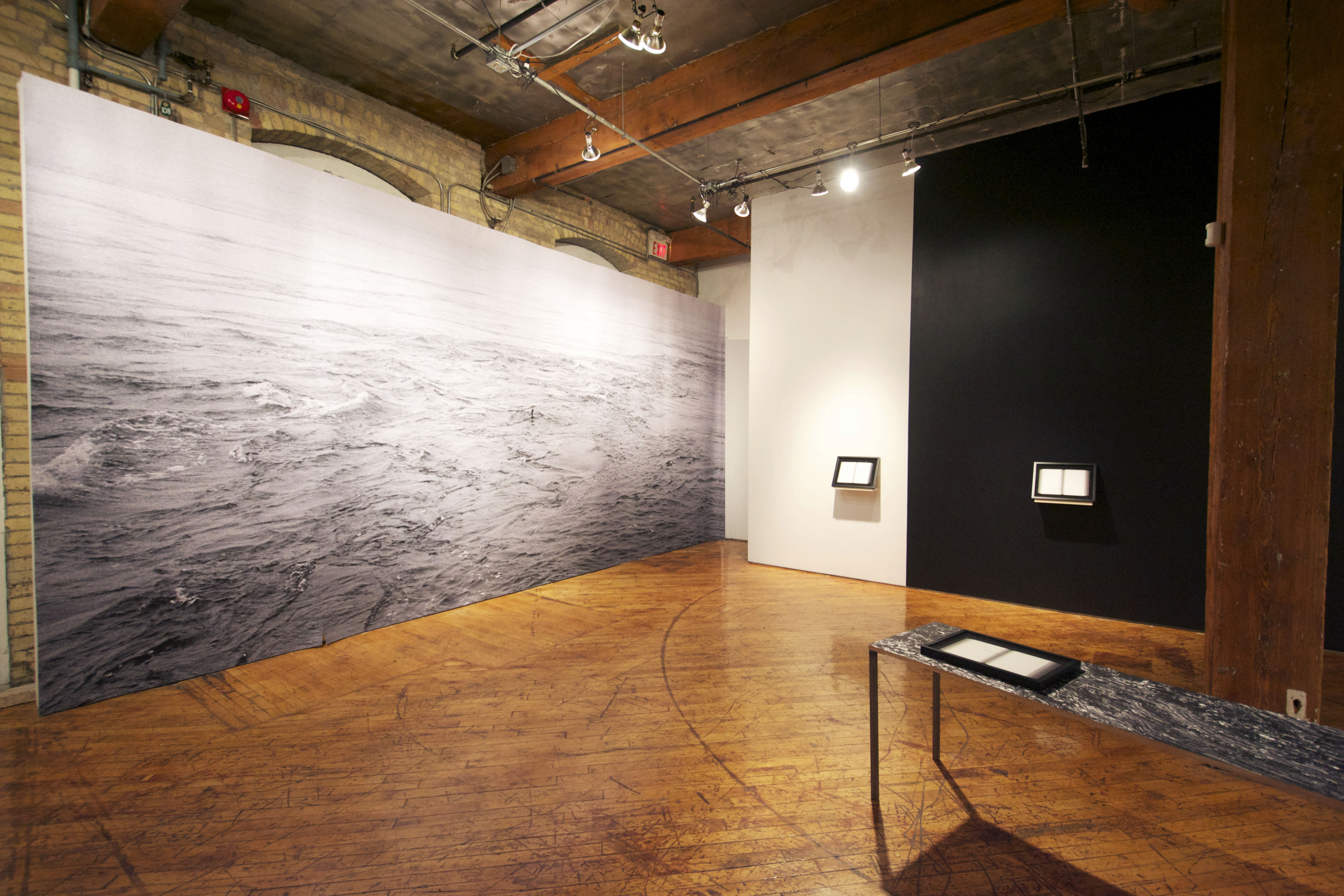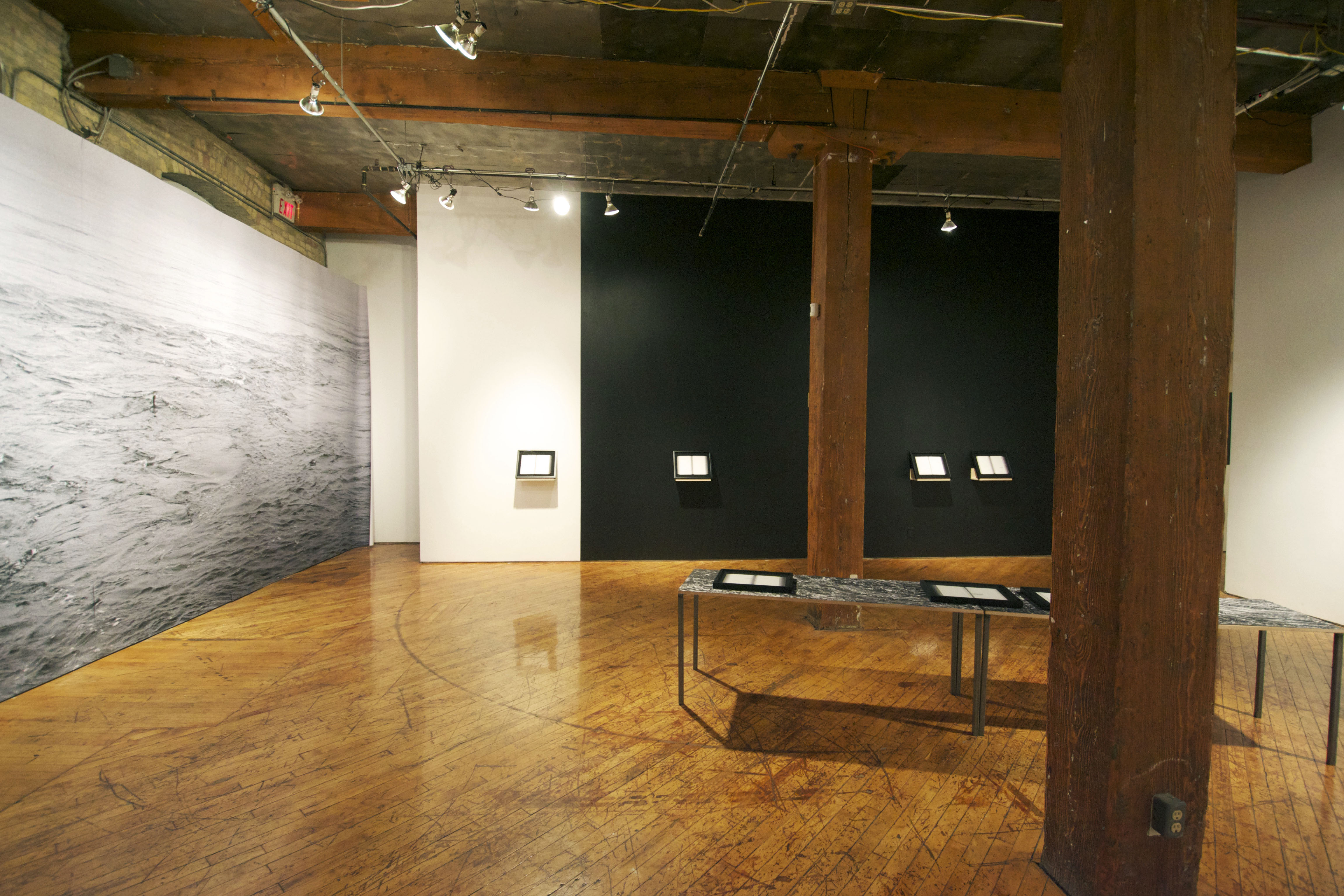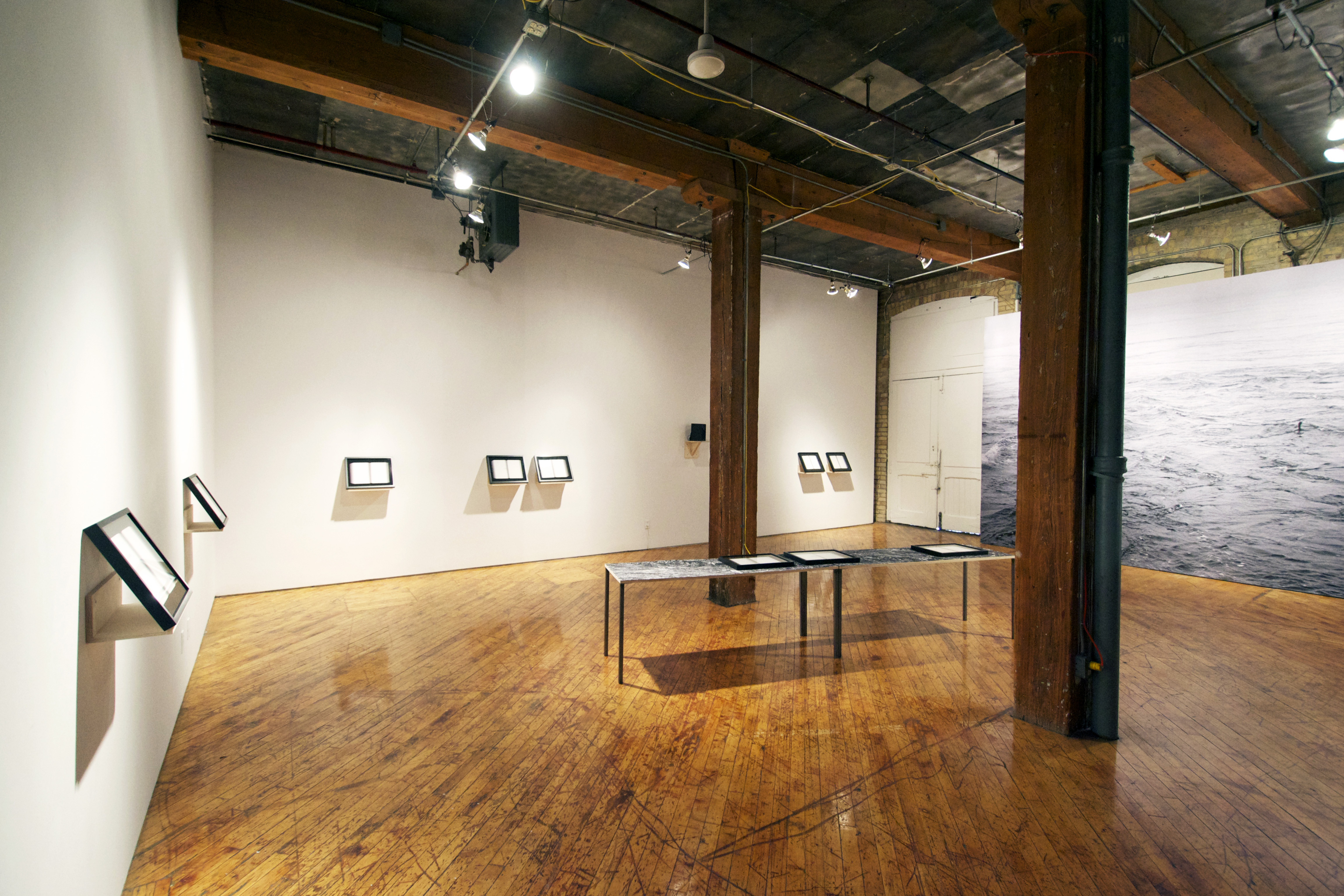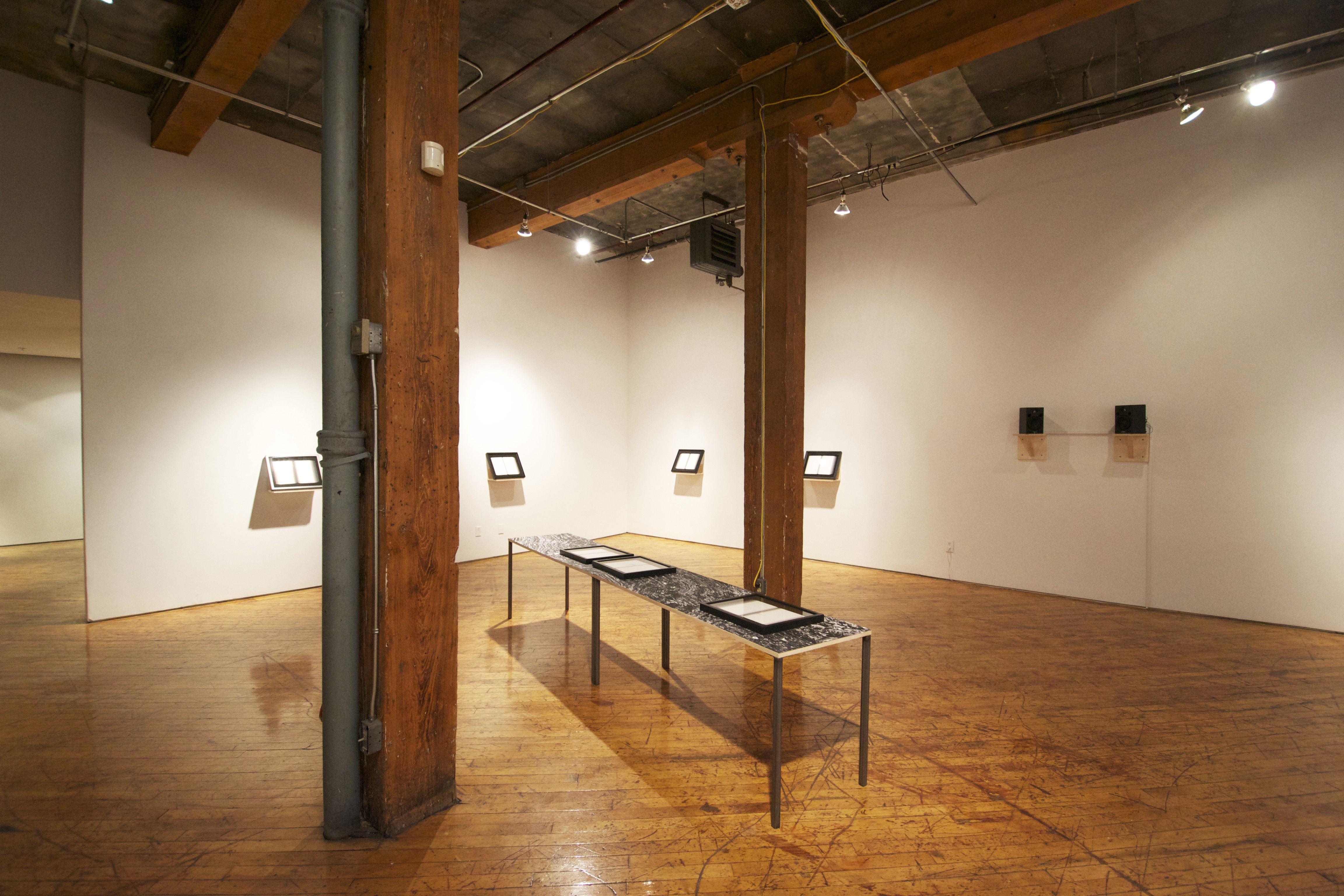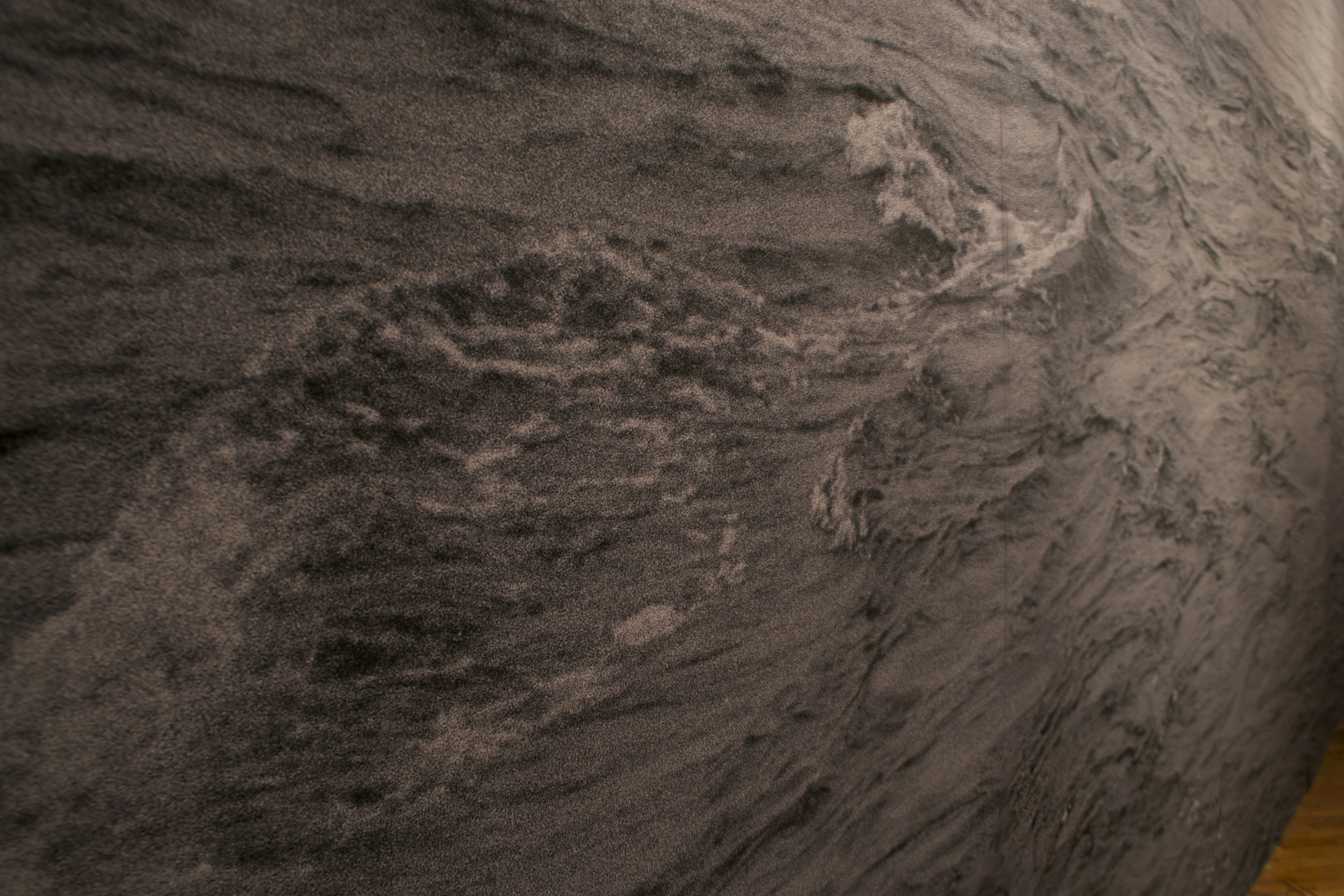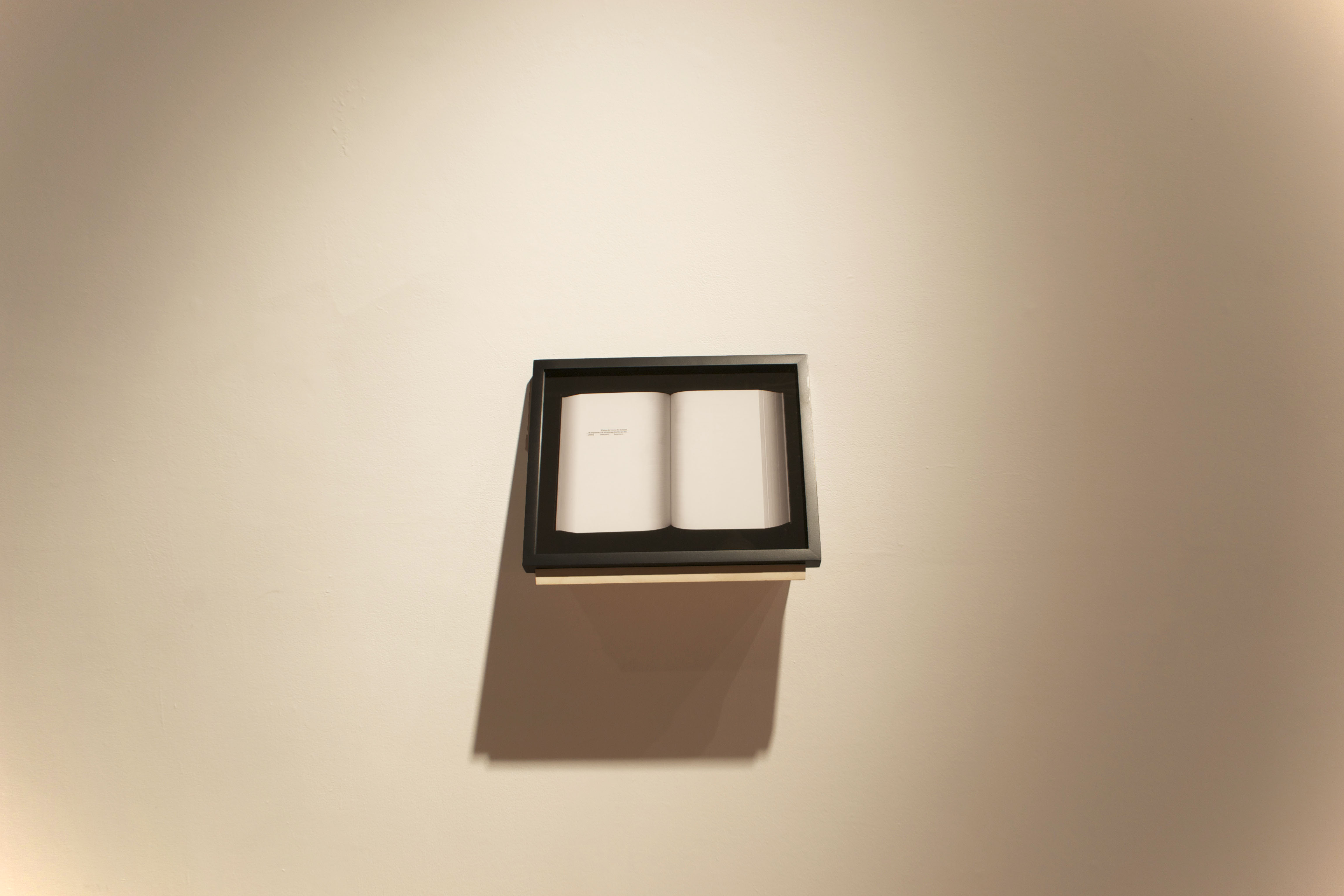Aiminanu is a word in Innu-Aimun which translates to “there is a conversation going on.” The exhibition rests upon this idea of conversation—between languages, cultures, and people. Through an ensemble of sentences selected from an Innu-French dictionary, it also explores the relations between language, territory, and identity. The dictionary appears as a place of affirmation, where the language itself is speaking: the Innu words, when translated, become sentences which carry meanings, knowledge, and poetic evocations. Placed in the gallery according to the meaning of the four directions, the sky, and the earth, they also evoke an intimate relation between human and territory, in tune with the cycles of the day, of the seasons, and of life. The dictionary also represents a place of dialogue between a spoken language, Innu, and a written language, French—a dialogue that echoes with the sound that is heard in the space, the voices of a conversation between the artist and Mathias Mark, who expresses the importance of hearing the words of his language and culture. Aiminanu thus suggests listening to these voices that come from the earth and that mix with the currents of rivers.
Aiminanu est un mot de l’innu-aimun qui se traduit par « il y a une conversation en cours ». L’exposition repose sur cette idée de conversation – entre les langues, les cultures et les personnes. Conçue autour d’un ensemble de phrases tirées d’un dictionnaire innu-français, elle explore aussi les relations entre langage, territoire et identité. Le dictionnaire apparaît comme un lieu d’affirmation, où la langue elle-même prend la parole : les mots innus, une fois traduits, deviennent des phrases qui sont porteuses de sens, de connaissance et d’évocations poétiques. Placées dans l’espace en fonction des significations des quatre directions, du ciel et de la terre, elles témoignent aussi d’une relation intime entre l’humain et le territoire, en phase avec les cycles du jour, des saisons ou de la vie. Le dictionnaire représente aussi un lieu d’échange entre une langue parlée, l’innu, et d’une langue écrite, le français. Un dialogue qui fait écho à ce qu’il est possible d’entendre dans l’exposition, c’est-à-dire les voix d’une conversation entre l’artiste et Mathias Mark, qui énonce l’importance d’entendre les paroles de sa langue et de sa culture. Aiminanu suggère ainsi d’écouter ces voix qui viennent de la terre et qui s’entremêlent aux cours des rivières.
The artist would like to gratefully acknowledge the support of Mathias Mark, Tanya Lalo Penashue, Craig Rodmore, Guy Sioui Durand, Sodec, VU, L’Œil de Poisson, François Simard, Le Labo, YYZ.
Documentation
Essay
Aiminanu
"A conversation is going on,” as it translates from Innu-aimun. Thus, the relationship develops through spoken language.
Artists Bios
Anne-Marie Proulx
Anne-Marie Proulx is originally from Lévis, where she grew up on the banks of the Saint Lawrence River, she now lives and works on the other side of the river, in Québec City. With a practice that integrates words and images, she creates poetic works that are situated between history and myth, a consciousness of the world and its interpretation. Her works present themselves as free spaces, open to the imagination, where the real is transformed to reach new narrative evocations. She has presented her work at La Centrale, Panache art actuel, the Darling Foundry, and Regart, and it will be included in upcoming exhibitions at Galerie UQO, FRAC Lorraine (France), and in the exhibition program of Montréal’s 375th anniversary. She has contributed writing for YYZ, Eastern Edge, Ciel variable, Esse, and Les Éditions du Renard, and has presented lectures at conferences in Québec and internationally. annemarieproulx.com
Mathias Mark
Mathias Mark is from Pakuashipi, a community situated on the lower northern coast of the Saint Lawrence River. He lives on the banks of the Pakua Shipu, a large river which is the way into the interior of the territory, where the Innu traditionally lived in the winter season, following caribou herds. Through the teachings of the elders, he is invested in learning the skills and knowledge of his traditional Innu culture, in order to share them with new generations. He is interested in the technical as much as the spiritual aspects of hunting, following preparation methods with respect for the animal, while listening to traditional songs and to the rhythm of the teueikan, the sacred drum. He has also begun recording the stories of the elders so that their memories will continue to inspire the life of the Innus.
Originaire de Lévis, où elle a grandi sur les rives du fleuve Saint-Laurent, Anne-Marie Proulx vit et travaille maintenant de l’autre côté du fleuve, à Québec. Avec une pratique qui fait se rencontrer les images et les mots, elle crée des univers poétiques qui se situent entre l’histoire et le mythe, la conscience du monde et son interprétation. Ses oeuvres se présentent comme des espaces de liberté, ouverts à l’imaginaire, où le réel est transformé pour atteindre de nouvelles évocations narratives. Récemment, ses oeuvres ont fait l’objet d’expositions à La Centrale, Panache art actuel, la Fonderie Darling, Regart, et son travail sera bientôt présenté dans des expositions à la Galerie UQO, la FRAC Lorraine (France), ainsi que dans la programmation d’expositions du 375e anniversaire de Montréal. Ses textes ont été publiés dans différentes publications et revues, et elle a présenté des conférences tant au Québec qu’à l’étranger. annemarieproulx.com
Mathias Mark est de Pakuashipi, une communauté située sur la Basse-Côte-Nord du fleuve Saint-Laurent. Il vit sur les rives de la Pakua Shipu, une grande rivière qui mène vers l’intérieur des terres, où les Innus vivaient traditionnellement durant la saison hivernale, suivant les hardes de caribous. Par l’enseignement des aînés, il s’investit dans l’apprentissage des compétences et des connaissances de sa culture innue traditionnelle, afin d’en faire le partage aux nouvelles générations. Il est intéressé par les aspects autant techniques que spirituels de la chasse, suivant des méthodes de préparation en respect de l’animal, et écoutant des chants ainsi que le rythme du teueikan, le tambour sacré. Il a également commencé à enregistrer les récits des aînés pour que leurs souvenirs continuent à inspirer la vie des Innus.
